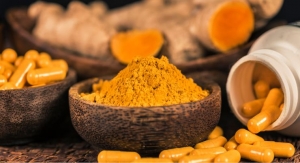By Mike Montemarano, Associate Editor05.06.24
Experts in R&D and commercialization of probiotic products discussed the latest advances in the field at SupplySide East in April.
Noah Zimmerman, CSO of Verb Biotics, discussed emerging science that can help develop next-generation probiotics, while Michael Bush, managing partner at GrowthWays Partners, LLC, discussed best practices for bringing a new probiotic to market.
“Today, we’re able to advance our scientific studies of the microbiome with the more recently developed biotechnologies helping us to make pretty extensive advances in understanding our own physiology, and how it interacts with the environment,” said Zimmerman.
Likewise, these technologies can better demonstrate how a bacteria may interact with prebiotic fibers, botanicals, and other actives within a single product.
“When the industry first started with this, it was a little bit clumsy at first, but we can look more deeply at the phytochemicals present in the botanicals out there,” Zimmerman said, “and how those chemicals can be used in a more targeted way in combination with probiotics. For instance, bacteria can clip phytochemicals off into really small bioactive components that can be absorbed into the body and circulated more easily.”
The advancement of precision fermentation has allowed manufacturers to produce virtually any metabolite to target a bodily function. “If that metabolite is heat stable, it can also be pasteurized, making it a postbiotic and bypassing several of the challenges associated with ensuring an ingredient can survive for a few years, or go into a cup of coffee,” said Zimmerman.
Advancing researchers is also helping product developers pair ingredients better. “The health issues that we target through nutrition aren’t due to a single factor, it’s a network of different factors coming together,” Zimmerman said. “For example, some people might have more of a specific receptor for a nutrient that another person lacks, so there are key differences in how that ingredient is absorbed from person to person. As we start to pair one bacteria with other bacteria or botanicals, we can ensure that ingredients are more functional across a wider population.”
Metabolomics, or the science of metabolites present within an organism, has seen explosive growth in the past five or so years, Zimmmerman noted, and this broader understanding of a wider range of active metabolites is critical to future research.
“Newer estimates suggest that 70% of metabolites coursing through your veins are directly produced by the gut microbiome. That includes neurotransmitters like GABA, with some strains producing clinically-relevant dosages, as well as butyrate, a keystone short-chain fatty acid … and microbiome-specific metabolites like urolithin, which is only found in nature through bacterial breakdown.”
Bacteria also affect how people respond to polyphenols, Zimmerman noted.
“Having concentrations of bacteria which are better at breaking down polyphenols into simple phenols gets those metabolites to sites in the body where they’ve needed, opening up opportunities for all-new types of probiotics than what the market currently offers.”
Finally, new digital technologies are improving the rate and accuracy of strain discovery. “Biologists and bioinformatic scientists can use AI to leverage huge files of genome data to really understand, and not just guess, how a probiotic works,” he said. “Robots at our disposal can enable high-throughput screening in ways never done before, where we can test 250 different candidate strains and variants, to hone in on the metabolites we’re looking for at clinically-relevant doses, which we couldn’t do even 5 years ago.”
Greater digital capabilities can also eliminate hiccups ahead of pre-clinical studies, such as determining if a probiotic might produce a toxin, or have some kind of antibiotic-resistant gene, either of which could potentially be resolved through genetic engineering.
“All of this can de-risk human clinical trials, which is the number-one research expense right now. AI can create a digital twin of a person’s microbiome, and we could then take genomes from the probiotics that we want to use and see how they would interact with this huge network incredibly specific to one person’s gut,” Zimmerman said.
The amount of additional vetting researchers can do through these technologies will, overall, help to create stronger structure-function claims and more quickly bring the best candidates to the docket for clinical validation.
Valuable products in the probiotics space must be uniquely protected or insulated from competition, must have demonstrable benefits, and must be produced and marketed ethically, he said.
When building out the scientific portfolio of a probiotic ingredient, it’s important for that science to be accessible to the masses at a very early stage, and it’s often beneficial to have scientific experts on staff who can distill findings to demonstrate their uniqueness to broader markets.
“So many companies are putting out ‘me too’ products, which is great if your goal is to generate some quick revenue,” Bush said, “but ‘borrowed science’ is highly limiting in a company’s valuation.”
Patents need to follow specific parameters in order to make it more difficult for competitors to borrow that science and pass it off as their own in marketing, noted Bush. As was true in BC30’s case, having a brand name included within a patent and related studies can make it more difficult for competitors to misattribute that science as their own, and generalize it to the species- rather than the strain-level.
“Trademark that brand name, and use that trademark everywhere, so if people try to get away with using your clinical studies, they’re in violation of that trademark to a greater degree.”
It’s the brand’s responsibility to monitor the market for patent and trademark infringements, he added. “If you don’t enforce your trademarks and patents, and let people do whatever they want with your IP, they can be invalidated.”
Including any other kind of technology, such as those used for stability or genetic modification, within a patent accomplishes a great deal in preventing science from being generalized, Bush noted. “Patent around specific utilities, and go as wide as possible for health applications; that’s the main defensive purpose that can be met with patents in this space.”
When it comes to clinical data, the best bet is to publish everything, Bush said. “Proprietary data doesn’t build value in a business,” he noted. “You can spend a million dollars on a clinical study, but if you don’t maintain control over publication rights, you might knock it out of the park with certain endpoints, but others might be less promising,” reducing the return on investment.
Companies that maintain publication rights have a better chance of ruling out what won’t work at the preclinical phase rather than having to publish negative findings within the human clinical trial.
In addition to establishing the credibility and unique applicability of a probiotic ingredient to the industry, achieving consumer recognition is another vital step.
“The biggest ‘get’ if you’re an ingredient company is to have your ingredient’s logo front-of-pack,” said Bush. “At first, we didn’t sell our ingredient (BC30) to manufacturers who wouldn’t include our logo on the package, and eventually, 80% of products that featured BC30 had the logo somewhere on the package. At one point, we had 58 products with BC30 logos in Whole Foods’ inventory.”
Further, enforcing proper identification on labels among finished product brands ensures consumers won’t be left in the dark.
“If a product doesn’t have the genus, species, and strain included on the label, consumers can’t look up clinical studies on that product. Consumers can only truly establish whether or not a certain genus and species is fit for human consumption,” said Bush. “I don’t know why any brand owner would ever label their product this way, other than to intentionally confuse consumers, or to be able to switch strains around and save two cents per kilo without having to print new labels. In either case, consumers aren’t getting what they believe they’re getting, which is a clinically-studied probiotic.”
About the Author: Mike Montemarano has been the associate editor of Nutraceuticals World since 2020. He can be reached at mmontemarano@rodmanmedia.com.
Noah Zimmerman, CSO of Verb Biotics, discussed emerging science that can help develop next-generation probiotics, while Michael Bush, managing partner at GrowthWays Partners, LLC, discussed best practices for bringing a new probiotic to market.
Emerging Biotechnologies
Biotechnology is helping to determine the mechanisms behind probiotic strains, and how applicable to a general population those mechanisms might be.“Today, we’re able to advance our scientific studies of the microbiome with the more recently developed biotechnologies helping us to make pretty extensive advances in understanding our own physiology, and how it interacts with the environment,” said Zimmerman.
Likewise, these technologies can better demonstrate how a bacteria may interact with prebiotic fibers, botanicals, and other actives within a single product.
“When the industry first started with this, it was a little bit clumsy at first, but we can look more deeply at the phytochemicals present in the botanicals out there,” Zimmerman said, “and how those chemicals can be used in a more targeted way in combination with probiotics. For instance, bacteria can clip phytochemicals off into really small bioactive components that can be absorbed into the body and circulated more easily.”
The advancement of precision fermentation has allowed manufacturers to produce virtually any metabolite to target a bodily function. “If that metabolite is heat stable, it can also be pasteurized, making it a postbiotic and bypassing several of the challenges associated with ensuring an ingredient can survive for a few years, or go into a cup of coffee,” said Zimmerman.
Advancing researchers is also helping product developers pair ingredients better. “The health issues that we target through nutrition aren’t due to a single factor, it’s a network of different factors coming together,” Zimmerman said. “For example, some people might have more of a specific receptor for a nutrient that another person lacks, so there are key differences in how that ingredient is absorbed from person to person. As we start to pair one bacteria with other bacteria or botanicals, we can ensure that ingredients are more functional across a wider population.”
Metabolomics, or the science of metabolites present within an organism, has seen explosive growth in the past five or so years, Zimmmerman noted, and this broader understanding of a wider range of active metabolites is critical to future research.
“Newer estimates suggest that 70% of metabolites coursing through your veins are directly produced by the gut microbiome. That includes neurotransmitters like GABA, with some strains producing clinically-relevant dosages, as well as butyrate, a keystone short-chain fatty acid … and microbiome-specific metabolites like urolithin, which is only found in nature through bacterial breakdown.”
Bacteria also affect how people respond to polyphenols, Zimmerman noted.
“Having concentrations of bacteria which are better at breaking down polyphenols into simple phenols gets those metabolites to sites in the body where they’ve needed, opening up opportunities for all-new types of probiotics than what the market currently offers.”
Finally, new digital technologies are improving the rate and accuracy of strain discovery. “Biologists and bioinformatic scientists can use AI to leverage huge files of genome data to really understand, and not just guess, how a probiotic works,” he said. “Robots at our disposal can enable high-throughput screening in ways never done before, where we can test 250 different candidate strains and variants, to hone in on the metabolites we’re looking for at clinically-relevant doses, which we couldn’t do even 5 years ago.”
Greater digital capabilities can also eliminate hiccups ahead of pre-clinical studies, such as determining if a probiotic might produce a toxin, or have some kind of antibiotic-resistant gene, either of which could potentially be resolved through genetic engineering.
“All of this can de-risk human clinical trials, which is the number-one research expense right now. AI can create a digital twin of a person’s microbiome, and we could then take genomes from the probiotics that we want to use and see how they would interact with this huge network incredibly specific to one person’s gut,” Zimmerman said.
The amount of additional vetting researchers can do through these technologies will, overall, help to create stronger structure-function claims and more quickly bring the best candidates to the docket for clinical validation.
Generating Value
Bush, prior to becoming a consultant for the industry, worked with biotechnology company Ganeden and oversaw the discovery and commercialization of the BC30 probiotic ahead of its sale to Kerry. He attributed multiple factors to the success of the ingredient in the dietary supplement and functional food market.Valuable products in the probiotics space must be uniquely protected or insulated from competition, must have demonstrable benefits, and must be produced and marketed ethically, he said.
When building out the scientific portfolio of a probiotic ingredient, it’s important for that science to be accessible to the masses at a very early stage, and it’s often beneficial to have scientific experts on staff who can distill findings to demonstrate their uniqueness to broader markets.
“So many companies are putting out ‘me too’ products, which is great if your goal is to generate some quick revenue,” Bush said, “but ‘borrowed science’ is highly limiting in a company’s valuation.”
Patents need to follow specific parameters in order to make it more difficult for competitors to borrow that science and pass it off as their own in marketing, noted Bush. As was true in BC30’s case, having a brand name included within a patent and related studies can make it more difficult for competitors to misattribute that science as their own, and generalize it to the species- rather than the strain-level.
“Trademark that brand name, and use that trademark everywhere, so if people try to get away with using your clinical studies, they’re in violation of that trademark to a greater degree.”
It’s the brand’s responsibility to monitor the market for patent and trademark infringements, he added. “If you don’t enforce your trademarks and patents, and let people do whatever they want with your IP, they can be invalidated.”
Including any other kind of technology, such as those used for stability or genetic modification, within a patent accomplishes a great deal in preventing science from being generalized, Bush noted. “Patent around specific utilities, and go as wide as possible for health applications; that’s the main defensive purpose that can be met with patents in this space.”
When it comes to clinical data, the best bet is to publish everything, Bush said. “Proprietary data doesn’t build value in a business,” he noted. “You can spend a million dollars on a clinical study, but if you don’t maintain control over publication rights, you might knock it out of the park with certain endpoints, but others might be less promising,” reducing the return on investment.
Companies that maintain publication rights have a better chance of ruling out what won’t work at the preclinical phase rather than having to publish negative findings within the human clinical trial.
In addition to establishing the credibility and unique applicability of a probiotic ingredient to the industry, achieving consumer recognition is another vital step.
“The biggest ‘get’ if you’re an ingredient company is to have your ingredient’s logo front-of-pack,” said Bush. “At first, we didn’t sell our ingredient (BC30) to manufacturers who wouldn’t include our logo on the package, and eventually, 80% of products that featured BC30 had the logo somewhere on the package. At one point, we had 58 products with BC30 logos in Whole Foods’ inventory.”
Further, enforcing proper identification on labels among finished product brands ensures consumers won’t be left in the dark.
“If a product doesn’t have the genus, species, and strain included on the label, consumers can’t look up clinical studies on that product. Consumers can only truly establish whether or not a certain genus and species is fit for human consumption,” said Bush. “I don’t know why any brand owner would ever label their product this way, other than to intentionally confuse consumers, or to be able to switch strains around and save two cents per kilo without having to print new labels. In either case, consumers aren’t getting what they believe they’re getting, which is a clinically-studied probiotic.”
About the Author: Mike Montemarano has been the associate editor of Nutraceuticals World since 2020. He can be reached at mmontemarano@rodmanmedia.com.




























